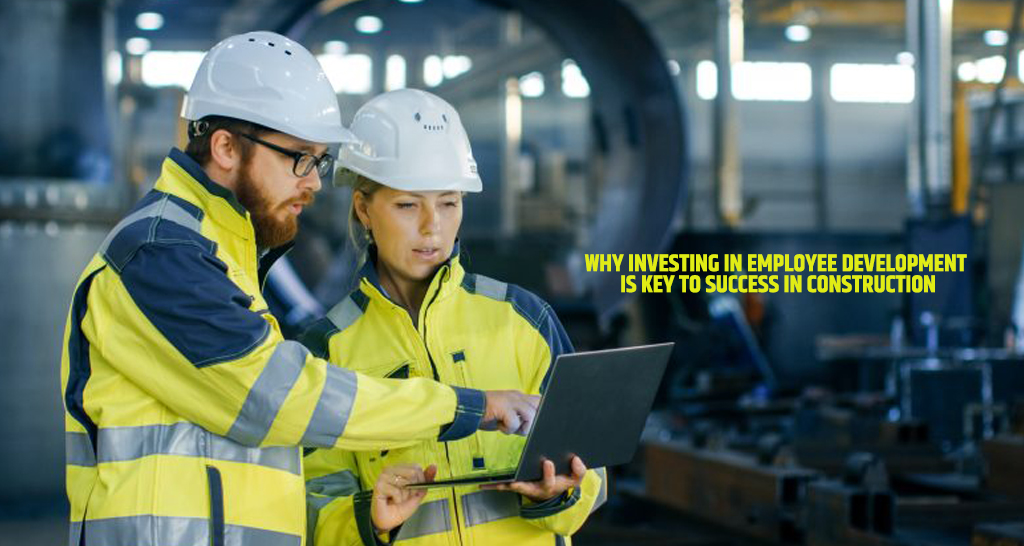Imagine a construction site running like a well-oiled machine. Jobs are completed on time, there are fewer accidents, and there is a workforce that seems to know exactly how to handle every challenge. It sounds like a dream, right? But it’s more achievable than you think. The secret lies not in the latest equipment or tools—it’s in the people.
When employees are given the right kind of training, the results are transformational. But how exactly does employee development lead to long-term success? And why is it such a critical investment for any company in this high-stakes industry? Let’s dive into the reasons that might surprise you.
The Role of Safety in Project Success
No matter the size of the project, safety always plays a critical role. A single mistake or unsafe practice can lead to injuries, costly delays, and even legal troubles. But it’s not just about following regulations. It’s also about protecting your team and ensuring the smooth progress of each project. This is where safety training steps in.
Take the 10-hour OSHA construction training, for example. It’s one of the most recognized programs for helping workers spot and avoid potential hazards, ensuring they stay safe on-site. Beyond teaching essential skills, this coaching helps foster a strong safety culture that spreads across the workforce.
And here’s where it gets even more interesting—when employees feel safe, they work with greater confidence and focus. Accidents drop, productivity climbs, and projects move forward more efficiently. In short, a well-trained, safety-conscious team doesn’t just meet deadlines; they exceed expectations.
Boosting Productivity with Skilled Employees
Beyond safety, employee development also boosts productivity. Well-trained workers know their tasks, use equipment efficiently, and collaborate more effectively. The difference between a team that’s just “getting the job done” and one that operates smoothly often boils down to the quality of their practice.
Imagine workers learning on the go versus those who have undergone targeted coaching. The difference is clear. Staff trained in their roles can handle tasks quicker and with fewer mistakes. They understand how to use tools properly, follow processes correctly, and manage time efficiently.
This translates into projects being completed on time, within budget, and with less rework. Regular coaching sessions also keep staff updated on industry standards and best practices, ensuring they remain sharp and ready for any challenge.
Long-Term Financial Benefits
When companies invest in their staff, they’re also investing in their own long-term financial success. While some might view these programs as an upfront cost, the return on this investment is undeniable. Well-trained employees lead to fewer accidents, which means fewer disruptions, lower insurance costs, and fewer fines for safety violations. Over time, this adds up to significant savings.
Additionally, companies that focus on developing their workforce see lower employee turnover. Staff feel valued when their employers invest in their growth, and they’re more likely to stay with the company.
This means lower recruitment and training costs for new hires. Plus, experienced employees are more efficient and need less supervision, reducing overhead costs. Overall, it’s a win-win for the employee and the business.
Building a Strong Culture of Safety and Growth
Developing your employees doesn’t stop at the basics of safety and productivity. It’s also about building a workplace culture where growth, learning, and improvement are valued. When workers know they have opportunities to grow within the company, they are more likely to be engaged and motivated.
A strong safety culture is a key part of this. Companies that consistently teach their staff the latest safety rules create a workplace built on trust and responsibility. When employees grasp the importance of safety, they’re more inclined to follow the rules and watch out for one another.
When coaching is customized to handle specific job challenges, employees feel more responsible—they know their company cares about their safety.
Preparing for the Future
In an industry that is always changing, preparing for the future is crucial. The construction world is evolving with new technologies, materials, and methods. Investing in employee development helps workers stay ahead of these changes. Employees trained in emerging techniques are better equipped to handle new challenges and adapt to shifts in the industry.
For example, as digital tools and automation become more common, employees need to understand how to use this technology effectively. Coaching in these areas ensures that employees can use the tools and remain competitive in a changing job market. Companies that focus on this approach are preparing their workforce for the future, ensuring they succeed in a constantly changing industry.
Wrap Up!
When employees grasp the importance of safety, they’re more inclined to follow the rules and watch out for one another. From reducing accidents to boosting productivity, the benefits are clear. When staff are trained well, they become more efficient, stay safer, and are better prepared for the future. Ultimately, this leads to more successful projects, happier clients, and a stronger business.

